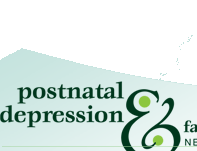 |

LAMOTRIGINE
This section is designed to inform professionals.
(Consumers, see Fact Sheet on Lamotrigine)
Available as Lamictal.
- Indicated for the prevention of mood episodes in patients with Bipolar Disorder, predominantly by preventing depressive episodes
- Adjunctive treatment should be considered for the prevention of manic episodes, as efficacy with Lamotrigine in mania has not been conclusively established.
- New evidence is showing that Lamotrigine is a potential option for maintenance therapy in pregnant women with bipolar disorder and has a growing reproductive safety profile.
Use in Pregnancy
Category B3/ C
- Limited clinical experience with its use in pregnancy has not yet revealed any characteristic abnormalities that could be attributed to Lamotrigine (1).
- Lamotrigine is a weak inhibitor of dihydrofolate reductase, which results in reduced concentration of folic acid. This increases the possibility of neural tube defects in the fetus if mother is treated with Lamotrigine during pregnancy. Women who are planning to become pregnant or who are pregnant while being treated on Lamotrigine should take folic acid supplement before conception and for the first 12 weeks of pregnancy.
- Specialist prenatal diagnosis including detailed mid-trimester ultrasound should be offered to pregnant women (9).
- Emerging data (10) suggest an association between Lamotrigine and an increased risk of non-syndromic oral clefts.
- There have been reports of decreased Lamotrigine concentration during pregnancy and restoration of pre-partum concentrations after delivery. Dosage adjustments may be necessary to maintain clinical response (1, 4, 5).
- Based on available data, Lamotrigine does not appear to significantly increase the chance for congenital anomalies. Long-term data regarding any possible neurobehavioral effect of Lamotrigine exposure in utero is not available (2).
- There is insufficient data from which to draw a definitive conclusion on the safety of Lamotrigine during pregnancy. As with any other therapy in pregnancy, it is necessary to weigh risks and benefits.
- Level B evidence from study published in April,2008 ( from limited or inconsistent evidence) showed that Lamotrigine is a potential maintenance therapy option for pregnant women with bipolar disorder and has a growing reproductive safety profile relative to alternative mood stabilizers. (11)
Use in Lactation
Category L3
- There are no controlled studies in breastfeeding women; however, the risk of untoward effects to a breastfed infant is possible.
- Lamotrigine is best avoided in breastfeeding and an alternative drug chosen.
- Preliminary data indicate that Lamotrigine is excreted into breast milk usually of the order of 40-60% and with an M/P ratio of 0.4 to 0.67.
- Therapeutic concentrations of Lamotrigine have been detected in breastfed infants, although towards the lower end of the therapeutic ranges for adults (5). The infant dose appears to be higher than the arbitrary cut-off for drug safety of 10%.
- The concern in exposing infants to Lamotrigine is because of the increased risk of life threatening skin rashes seen in children under 16 (6).
- If it is not feasible to choose an alternative drug and Lamotrigine is considered necessary while breastfeeding, it may be appropriate to alternating breast and bottle-feeding. This should reduce the infant’s dose to half. Feeding at the end of dosing interval (at the trough) may also help to lower infant exposure.
- The infant should also be monitored for evidence of adverse reactions such as poor suckling and sleepiness. It would also be prudent to consider monitoring the infant’s Lamotrigine concentration. (6)
References
(1). Use of Lamictal during Pregnancy and Lactation; Request from APA, May 2004.
(2). Amber Pakilit.(2004) The New Antiepileptic Drugs and Pregnancy;
(3). S. Gentile. (2005) Lamotrigine in Pregnancy and Lactation; Letter to the Editor, Archives of Women’s Mental Health): 8: 57-58.
(4). Torbjorn Tomson, Inger Ohman and Sigurd Vitols. Lamotrigine in Pregnancy and Lactation: A Case Report; Brief Communication. Epilepsia (1997): 38(9): 1039-1041.
(5). T. Tomson et al. (2000). Lamotrigine in pregnancy: Pharmokinetics During Delivery, in the Neonate, and During Lactation. Epilepsia), 41(6): 709-713.
(6). Linda H. Chaurdron and James W. Jefferson. (2000). Mood Stabilizers During Breastfeeding: A Review. J Clin Psychiatry, 61:79-90.
(7). Benjamin Bar-Oz, Irena Nulman, Gideon Koren and Shinya Ito. Anticonvulsants and Breast Feeding; A Critical Review. Paediatric Drugs 2000; 2(2): 113-126.
(8). Thomas H. Hale (2004). Medication and Mother’s Milk – Eleventh Edition.
(9). Medsafe: Information for the Health Professionals.
(10). GlaxoSmithKline in collaboration with Medsafe: June 2006.
(11). Marlene Busko; New Guidelines shed light on use of Psychotropic Medications During Pregnancy. Medscape Medical News; April 10, 2008.
|
 |






